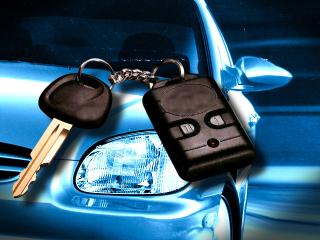Talking cars to save each other from theft
Washington, June 25: Stealing a car wont be easy for thieves anymore, thanks to a new type of car alarm that enables the vehicles to look after each other’s safety - just like a herd of animals under any potential threat from predators.
June 25: Stealing a car wont be easy for thieves anymore, thanks to a new type of car alarm that enables the vehicles to look after each other’s safety - just like a herd of animals under any potential threat from predators.
In this novel security system, cars will be talking to their neighbours constantly via hidden wireless transmitters, and if in case a thief tries to sweep it off, the cars would raise the alarm in a matter of seconds.
The system called SVATS (Sensor-network-based Vehicle Anti-theft System) has been designed by Hui Song from Frostburg State University, Maryland, US, in collaboration with colleagues at Pennsylvania State University.
"Multiple sensors hidden within the car would make it difficult, if not impossible, for a car thief to disable the system in a short period of time," New Scientist quoted Song, as saying.
In fact, this new model would also omit those false alerts, characteristic of traditional car alarms. Also, this cooperative, mutable and silent network of monitoring system would also do away with that annoying blare of an ignored car alarm.
The system starts when the driver of the vehicle switches on the transmitters fitted inside using a remote control, at the time of leaving the car. Then the car sends out a "join" message to all the nearby cars. The cars chooses its nearest neighbours to act as its sentinels and prefers partners that need the lowest signal strength for communication, so that the system does not consume less of the car's battery. The car continues sending out periodic "alive" signals to these watchers, till the time the owner returns and it finally sends a "goodbye" message.
However, in case the "alive" messages die out without a “goodbye” message, then the cars acting as watchers would report a theft by transmitting a message to a central base station. This would intern trigger the alarm which in turn would notify the security guard of the car park, the owners of the vehicle, or the police.
In fact, the system will also sense if a car is moving unexpectedly by measuring the signal strength of any "alive" messages. And if that happens, it transmits a warning message to other cars that are keeping a check on the same vehicle, because it is likely to be moving.
But, a theft alarm message will only be sent to the base station if a watching car gets more than three such warning signals from different sources. This would decrease the chances of any false alarms known for anti-theft systems.
The researchers themselves drove off some cars to test how the system works, and found that SVATS detected all such "thefts" in a matter of just 4 to 9 seconds. The system was apparently resistant to false alarms caused by weather, or people walking around the car park, both of which can affect the signals between sensors.
If a car is stolen from the lot, it is preferable that the theft be noticed and reported before the car leaves the lot, but if it is not, the Sensor network-based Vehicle Anti-Theft system, SVATS, has another layer of protection.
Although the main or master sensor needs to be connected to the car's power system and so is fairly easily disabled by thieves, other slave sensors would be distributed in the car. These sensors might be activated when the master sensor no longer operates and begin to send out an identification signal. The researchers hope to be able to use existing wireless devices that are at intersections and roadsides, to track the sensors in the stolen car.
While these wireless nodes are not on every street, in areas where they are used to sense traffic patterns, stop light timing and other things, they can be used to track stolen cars. Because the slave sensors are very small, they would be very difficult to locate and destroy, while conventional location equipment, such as various G. P. S. systems, can be identified and neutralized.
"Right now the sensors we are testing are about the size of a dollar coin with leads coming offWe will eventually make them only about a cubic millimeter, small enough to embed in a parking sticker and very inexpensive to manufacture," said Sencun Zhu, assistant professor of computer science and engineering.
Zhu said that street parking is more difficult to deal with than parking lots, however, he believes that if apartment buildings along the street band together to provide sensors and base stations it might work as well. He believes that perhaps eventually, some government office like a state's department of transportation could provide the sensors and keep track of the vehicles.
While the plan now is to have the base station contact the car owner by phone, eventually the option of having the call go to a protective service or the police for a fee is possible. (ANI)